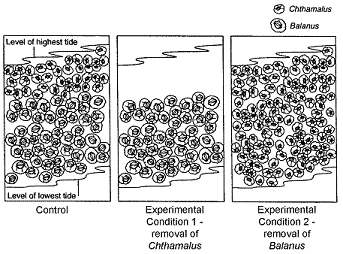Which of the following molecules are able to
cut DNA molecules at specific sequences?
a. assembly enzymes
b. hydrolytic enzymes
c. restriction enzymes
d. ligase enzymes
e. repair enzymes
C
You might also like to view...
Burning of carbon-based fuels can produce which one of the following, an odorless gas that competes with oxygen for binding to hemoglobin.
A) carbon monoxide. B) hydrogen peroxide. C) sulfuric acid. D) methane.
Coconuts in the form that we are used to seeing are actually
a. fruits. b. leaves. c. seeds. d. stems
Passive immunity differs from active immunity in that passive immunity
A) causes long-term immunity. B) involves the administration of preformed antibodies. C) results in the production of antibodies. D) is not effective against a preexisting condition. E) results in the production of memory cells.
In Experimental Condition 1 of Figure 54-1, the distribution of Balanus suggests:

a. that interspecific competition kept Balanus from extending higher into the intertidal area.
b. that intraspecific competition kept Balanus from extending higher into the intertidal area.
c. that an unfavorable environmental factor kept Balanus from extending higher into the
intertidal area.
d. that Balanus is less motile than Chthamalus.
e. that Balanus is more motile than Chthamalus